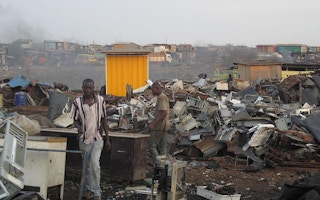Humans generated a staggering 44.7 million metric tonnes of electronic waste (e-waste) in 2016 — the equivalent of 4,500 Eiffel Towers, and five per cent more than the electrical and electronic goods discarded just two years earlier, says a new study.
The trend is set to continue, with volumes of e-waste expected to rise to 52.2 million metric tonnes by 2021.
A report on the study — carried out by the International Telecommunication Union, the UN University (UNU) and the International Solid Waste Association — published in The Global E-waste Monitor 2017, lays blame on falling prices that make electronic devices affordable and widely available.
In developing countries, a growing middle class with disposable incomes means that more electronic goods are being bought and replaced more frequently, according to the study. Asia, with its growing economies, accounts for more than 40 per cent of the e-waste generated globally.
“
In developing countries, e-waste is managed by the informal sector and ‘recycled’ with backyard techniques, often at the cost of the health of the workers and the environment.
Balde Kees, associate programme officer, UN University
Countries in Oceania, which include Australia and New Zealand, generated 17.3 kilograms of e-waste per person in 2016, the highest volume among the regional groupings. By contrast, African countries generated only 1.9 kg of e-waste per person.
Asians generated a per capita average of 4.2 kg of e-waste in 2016. However, volumes varied greatly between sub-regions: while the inhabitants of Brunei, China, Hong Kong and Singapore produced, on average, more than 18 kilograms of e-waste per person, those of Afghanistan or Nepal hardly produced any.
There is little information on the fate of discarded equipment and, according to the study, only 20 per cent of e-waste is “documented to be collected and properly recycled”.
Discarded electronic items are sources of high-value materials including gold, silver, copper, platinum and palladium, estimated to be worth about US$65 billion in 2016.
“There is a strong economic incentive to dump the waste or recycle it with inferior standards,” says Balde Kees, study leader and associate programme officer at UNU. This is particularly true of developing countries where formal waste management systems may not exist.
“Formal waste management ensures that recyclables are recovered and the toxic parts are safely disposed of,” explains Kees. In developing countries, e-waste is managed by the informal sector and ‘recycled’ with backyard techniques, often at the cost of the health of the workers and the environment, and “leading to inferior recyclates (raw materials sent to and processed in waste recycling plants) or even dumping,” he adds.








